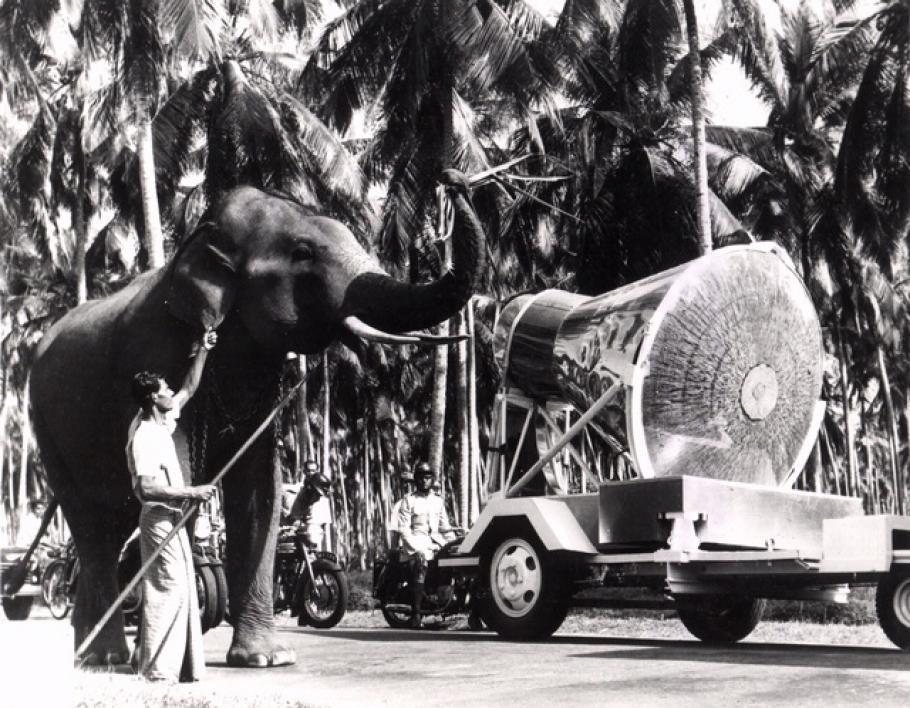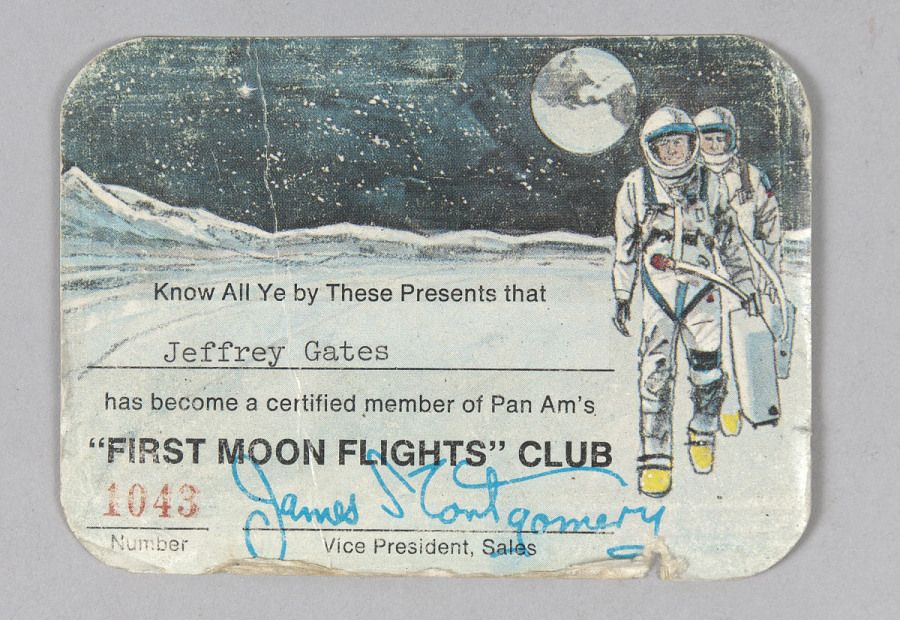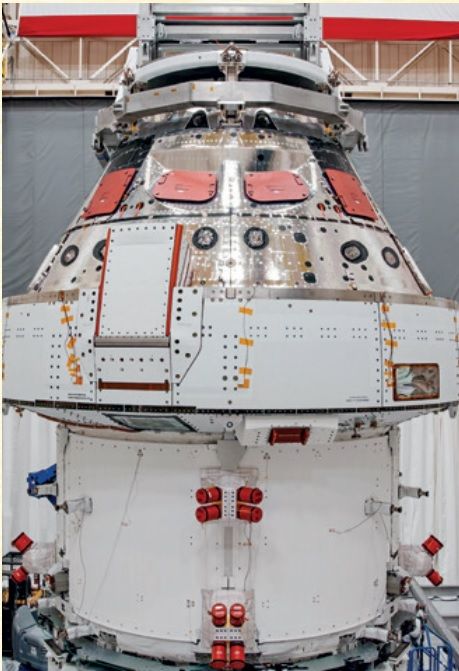What Will the New Age of Spaceflight Look Like?
So much has already been achieved in spaceflight, so what else could be possible?
:focal(577x316:578x317)/https://tf-cmsv2-smithsonianmag-media.s3.amazonaws.com/filer_public/8f/28/8f287b15-2687-435e-9d76-1ac1ab4d0018/artemis.jpg)
The dream of spaceflight has never been to fly to low Earth orbit and stay. The Moon and Mars beckon as attractive destinations for the next generation of space explorers. What new technologies will take people there? And how are the transformative changes of our current day setting the stage for the next phase in spaceflight?
Our perspectives on what spaceflight will become have changed over time. In very real ways, the visions imagined in the 1950s were both tremendously forward-thinking and yet deeply rooted in their time. Early space artists and engineers envisioned heavily populated orbiting space stations and human settlements on the Moon and Mars. What they could not envision were the very robust ways that those same things could be done without people even being present. As clever and creative as early scientists, engineers, and illustrators were, they could not easily imagine a computer smaller than a room or the act of sending photographs without physically transporting celluloid film. Although the future imagined in early speculations has not come to pass, in many ways it has actually exceeded those imaginings.
/https://tf-cmsv2-smithsonianmag-media.s3.amazonaws.com/filer_public/32/7f/327f3072-c69a-42cb-8b13-60b95e5541a5/proposed_usaf_manned_orbiting_laboratory_credit-_nasa.jpg)
Since the dawn of the space age in 1957, humanity has imaged the surface of every planet in our solar system—including Pluto (before new discoveries led to its astronomical reclassification) and Ceres, a minor planet in the asteroid belt. The exploration of other worlds with imagers, landers, and even rovers has transformed those points of light in the sky into landscapes mapped by planetary geologists, much like any Earth-bound site. Remote exploration has also gained powerful new tools. The James Webb Space Telescope is an astronomical instrument, not a spaceship, but it is an extension of human knowledge-gathering about the universe. And its findings stand to redefine what we know about the stars and ourselves.
The desire to land human beings on other worlds nonetheless retains its allure. Knowing that a person is present changes how information, material, or images are received. A robotic lunar satellite captured an image of Earth rising above the lunar surface first, but it was NASA astronaut Bill Anders’ photograph from Apollo 8 in 1968 that really caught the public imagination. “Earthrise” appeared in newspapers and magazines around the globe.
Will you be the person who takes the next photographs of otherworldly vistas captured through the viewfinder of a handheld camera? And what vehicle will carry you safely to your destination? The limits of chemical propulsion have become clear in recent decades. For missions that do not involve human beings— with all our high demands for temperature stability, as well as our constant need for nourishment and refreshed atmosphere—long voyages propelled by conventional rocket fuels suffice. But if we are to traverse the immense distances in space, new ways of powering spacecraft will need to be implemented.
The future of spaceflight is likely to be multinational. In some ways, spaceflight efforts always have been so organized. Canadian engineers from Avro Arrow played a vital role in the American Apollo program, helping to put astronauts on the Moon. Multinational partnerships have supported the International Space Station (ISS) throughout its lifespan.

Moreover, national membership in the socalled “space club” has been growing since the beginning of the space age. Working with NASA, Great Britain launched its first satellite, Ariel 1, in April 1962, followed quickly by Canada’s Alouette 1, built in Canada and launched by the United States just five months later. Over time, there have been different measures used to judge which nations can count themselves in the elite group through native space programs or capabilities. In 1965, France became the first nation other than the United States or the Soviet Union with a native launch capability, when it orbited the satellite Asterix-1 using a three-stage Diamant-A rocket launched from the French space port in Algeria. More recently, in 2018, Australia formed a space agency and, separately, Bangladesh launched Bangabandhu-1, a geostationary communications and broadcasting satellite, aboard an American SpaceX Falcon 9 booster. The space club is growing.

Earthly political concerns affect spaceflight collaborations, however. The ISS has been an absolute triumph of engineering and diplomacy, but as it shows its age (problems with a hole in a bulkhead, or persistent slow air leaks have made the news), plans for the next generation of space businesses to be built around servicing this aging structure raise the question: What’s next? Several companies have plans for building a commercial space station or for adding privately funded modules to the existing structure. At the same time, the United States has made the political commitment to keep up its operational involvement in the ISS until 2030, a significant extension. The ISS is also set to be serviced by the next generation of spaceships designed to deliver cargo and crew. The station may have a lot of life left in it yet. Still, the question remains: What will the next-generation infrastructure for near-Earth spaceflight look like?

The future of spaceflight will also depend upon the health of Earth’s orbital environment. The Russian destruction of a satellite in low Earth orbit in November 2021 drew renewed attention to near-Earth space, including both low Earth orbit and geostationary orbit, as environments that are vulnerable to pollution and debris. As early as 1978, NASA scientist Donald J. Kessler suggested that the density of objects in Earth orbit could get thick enough that collisions would start to cascade, with each strike creating increasing volumes of hazards for spacecraft and satellites. The Kessler syndrome (also known as the Kessler effect) poses a real threat to the vibrancy of the space sector. Alternatively, some of the most significant innovation in spaceflight may need to occur around the problem of cleaning up burned-out rocket stages, spent fairings, obsolete satellites, and other debris that threatens spacecraft.
The founding of the United States Space Force in 2019 as a separate military service occurred in part as a recognition of the vital role that space assets now play in all aspects of armed forces operations. In any modern military effort, command-and-control, logistics, and weapons accuracy all run through space or use space-based infrastructure at some point. Likewise, national security relies upon constellations of reconnaissance and intelligence-gathering assets that either exist in space or rely upon space-based paths at some point in their transmission.
The health and vibrancy of Earth’s orbit will depend upon deliberate choices to manage the supports that have been built there. Similarly, the development of lunar or Martian exploration will rely upon the construction of additional frameworks to make viable human activities in these far-flung destinations. Whether for communication, supplies, or refueling, stations near or on the surfaces of those worlds would likely be a necessary part of any extended human presence.
The future of spaceflight will also be knit into the fabric of your daily life in ways that you may not realize. Unless you make a conscious and concerted choice not to, we all operate on a daily basis in a world that relies upon constellations of satellites for weather forecasting, navigation and wayfinding, as well as supply chain connectivity. How will we navigate the new phase of this space age, and what role will you play in making it happen?
Spaceships 2nd Edition: An Illustrated History of the Real and the Imagined is available from Smithsonian Books. Visit Smithsonian Books’ website to learn more about its publications and a full list of titles.
Excerpt from Spaceships © 2016, 2022 by Elephant Book Company Limited

